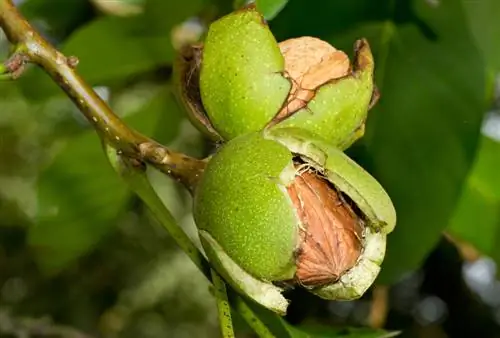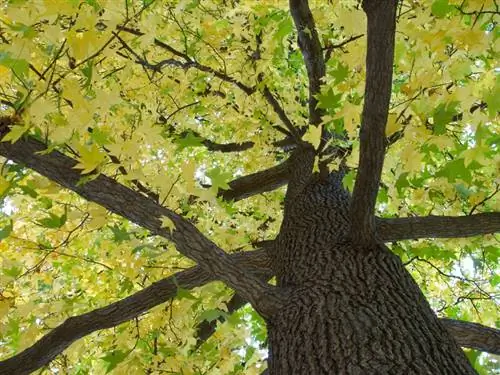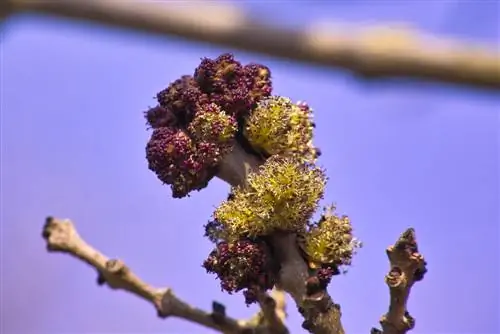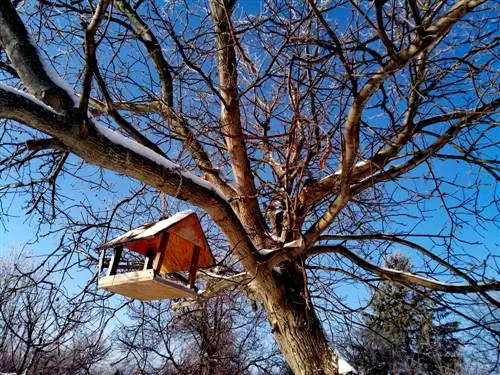- Author admin [email protected].
- Public 2023-12-16 16:46.
- Last modified 2025-01-23 11:21.
The walnut tree has many characteristics that differ from other fruit and other trees. In this article you will learn the most important features of the walnut, which was named Tree of the Year in 2008.

What are the special features of a walnut tree?
The walnut tree is special because it bears real nuts, produces juglone (allelopathic effect), has leaves rich in tannins (insect protection) and is sensitive to cuts due to strong sap flow. Ideally it should be cut in late summer.
Walnuts: stone fruits or nuts?
Every person, whether plant-loving or not, associates the walnut tree primarily with its he althy, tasty fruits - the walnuts. But are these stone fruits or real nuts?
Traditionally, walnuts were considered stone fruits in botany. However, a thesis published in 2006 at the Ruhr University Bochum showed that walnuts are indeed real nuts. The shell is the decisive factor: Put simply, a nut must be a closed fruit with a seed and a hard shell. The hard shell is formed from the carpels and cannot open independently. All of this is the case with walnuts.
From hydrojuglone glucoside to juglone
Another special feature of the walnut tree is the so-called juglone. The leaves and fruits of the plant contain water-soluble hydrojuglone glucoside, which is leached into the soil. There it is converted into juglone by bacteria.
Juglone is the simplest naturally occurring dye. It has an inhibiting effect on the germination of other plants. This is why there is only a small amount of undergrowth in the walnut tree.
In technical terms, this phenomenon is called “allelopathic effect”. This means that a plant is chemically influenced, possibly impaired, by another plant.
Leaves rich in tannins against insects
The walnut tree has leaves that are particularly rich in tannins. These decompose more slowly than other leaves. This makes them not really tasty for many insects.
Nut trees are generally said to have the characteristic of keeping away (repelling) flies. For this reason, they are often found in the courtyards of farms - next to the dung heaps required there. In this case, walnuts and other nut trees serve as protective shade and enable relaxed sitting.
Sensitive to cuts due to strong sap flow
What is also special is that the walnut tree reacts very sensitively to cutting measures - especially in spring, autumn and winter.
When cutting in spring, an extremely strong and long-lasting flow of sap occurs - often referred to as bleeding. This can cause massive damage to the walnut tree.
To avoid such a scenario, you should only prune your walnut tree in late summer (August, September). In these two months the tree sap is limited. In addition, wound healing is faster and he althier after a late summer cut.






